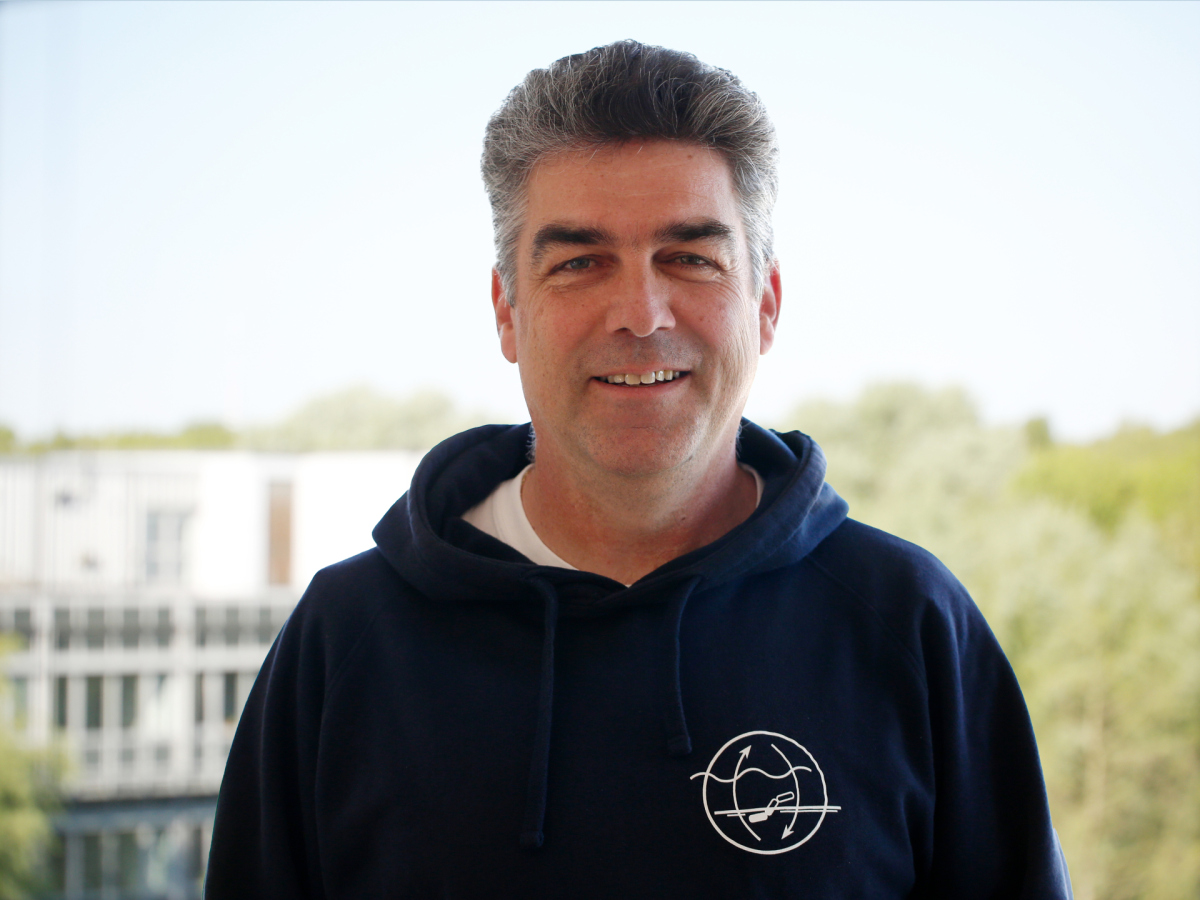- Press Office
- Press releases
- Zombie cells in the sea
Zombie cells in the sea: Viruses keep the most common marine bacteria in check
The ocean waters surrounding the German island of Helgoland provide an ideal setting to study spring algae blooms, a focus of research at the Max Planck Institute for Marine Microbiology since 2009. In a previous study, the Max Planck scientists observed a group of bacteria called SAR11 to grow particularly fast during these blooms. However, despite their high growth rates, the abundance of SAR11 decreased by roughly 90% over five days. This suggested that the cells were quickly decimated by predators and/or viral infections. Now, the Max Planck researchers investigated what exactly lies behind this phenomenon.
Finding the phages infecting SAR11
“We wanted to find out if the low numbers of SAR11 were caused by phages, that is viruses that specifically infect bacteria”, explains Jan Brüwer, who conducted the study as part of his doctoral thesis. “Answering this seemingly simple question was methodologically very challenging”.
How does phage infection work? Phages infect bacteria by introducing their genetic material into them. Once there, it replicates, and utilizes the bacterial ribosomes to produce the proteins it needs. Researchers from Bremen used a technology that enabled them to “follow” the phage’s genetic material inside the cell. “We can stain the specific phage genes and then see them under the microscope. Since we can also stain the genetic material of SAR11, we can simultaneously detect phage-infected SAR11 cells”, explains Jan Brüwer.
While this might seem straightforward, the low brightness and small size of the phage genes made it challenging for researches to detect them. Nonetheless, thousands of microscope images were successfully analyzed, bringing some exciting news.
“We saw that SAR11 bacteria are under massive attack by phages”, says Jan Brüwer. “During periods of rapid growth, such as those associated with spring algae blooms, nearly 20% of the cells were infected, which explains the low cell numbers. So, phages are the missing link explaining this mystery.”
Zombie cells: A global phenomenon
To the surprise of the scientists, the images revealed even more. "We discovered that some of the phage-infected SAR11 cells no longer contained ribosomes. These cells are probably in a transitional state between life and death, thus we called them 'zombie' cells”, Brüwer explains.
Zombie cells represent a novel phenomenon observed not only in pure SAR11 cultures but also in samples collected off Helgoland. Furthermore, analysis of samples from the Atlantic, Southern Ocean, and Pacific Ocean revealed the presence of zombie cells, indicating this phenomenon occurs worldwide.
“In our study, zombie cells make up to 10% of all cells in the sea. The global occurrence of zombie cells broadens our understanding of the viral infection cycle”, Brüwer emphasizes. “We suspect that in zombie cells, the nucleic acids contained in the ribosomes are being broken down and recycled to make new phage DNA.”

Brüwer and his colleagues hypothesize that not only SAR11 bacteria, but also other bacteria, can be turned into zombies. Thus, they want to further investigate the distribution of zombie cells and their role in the viral infection cycle.
“This new finding proves that the SAR11 population, despite dividing so fast, is massively controlled and regulated by phages”, stresses Brüwer. “SAR11 is very important for global biogeochemical cycles, including the carbon cycle, therefore their role in the ocean must be redefined. Our work highlights the role of phages in the marine ecosystem and the importance of microbial interactions in the ocean”.
Original publication
Brüwer, J.D., Sidhu, C., Zhao, Y. Eich, A., Rössler, L., Orellana, L.H., Fuchs, B.M (2024). Globally occurring pelagiphage infections create ribosome-deprived cells, Nat Commun (02 May 2024).
Participating institutions
- Max Planck Institute for Marine Microbiology, Celsiusstraße 1, 28359 Bremen, Germany
- College of Juncao Science and Ecology, Fujian Agriculture and Forestry University, Fuzhou, China
- PSL Research University: EPHE-UPVD-CNRS, UAR 3278 CRIOBE, Moorea, French Polynesia
Please direct your queries to:
Group Leader
MPI for Marine Microbiology
Celsiusstr. 1
D-28359 Bremen
Germany
|
Room: |
2222 |
|
Phone: |

Head of Press & Communications
MPI for Marine Microbiology
Celsiusstr. 1
D-28359 Bremen
Germany
|
Room: |
1345 |
|
Phone: |

